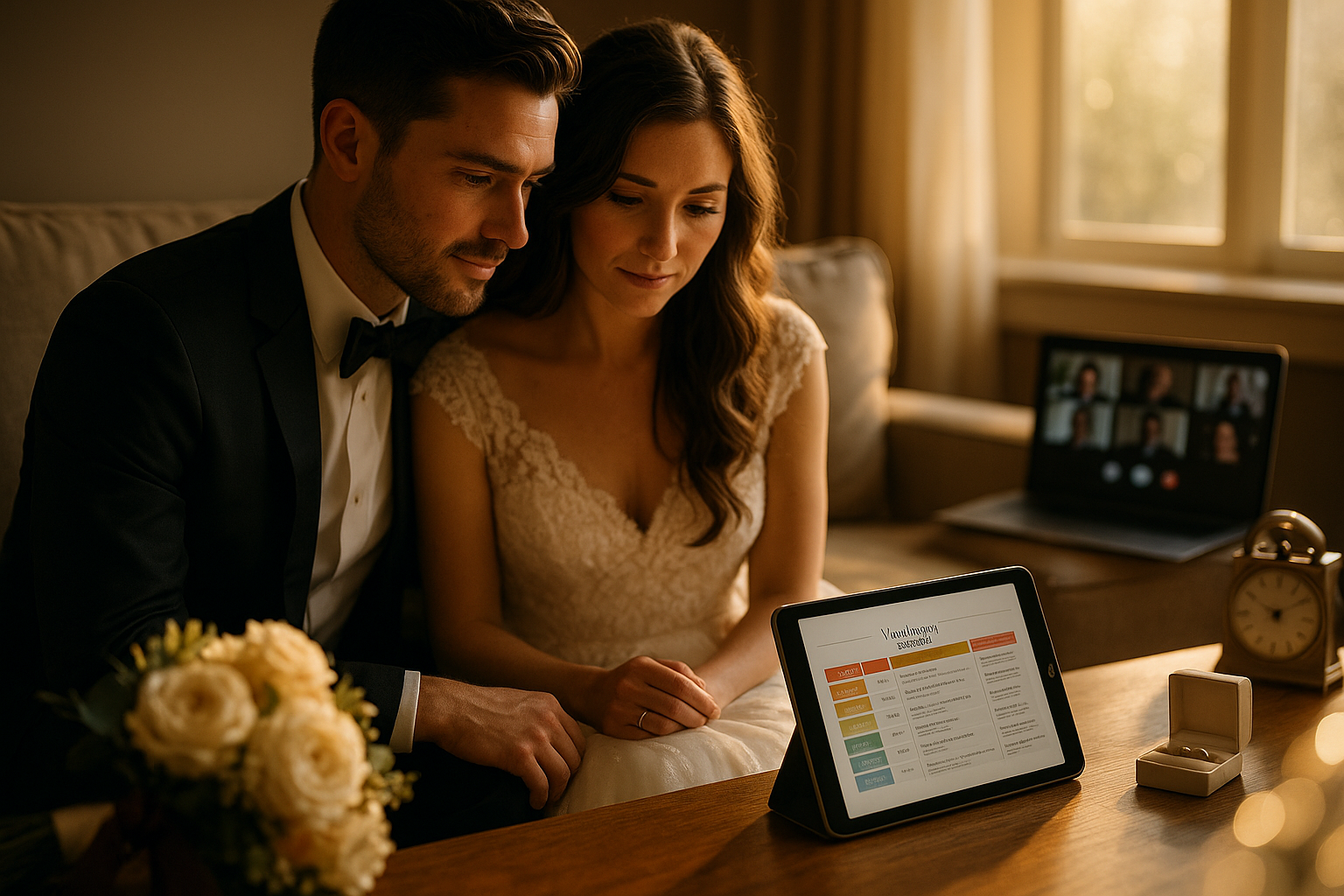Planning a virtual wedding? Congratulations! While the setting might be different from a traditional ceremony, the need for a well-structured timeline remains crucial. A detailed schedule ensures that your online wedding flows smoothly, keeping everyone on the same page and making your special day memorable.
Why a Virtual Wedding Timeline is Essential
Just like in-person weddings, virtual ceremonies require meticulous planning. A timeline helps coordinate various elements, from the ceremony to virtual receptions, ensuring that all participants know their roles and timings. This structure minimizes technical glitches and keeps the event engaging for your guests.
Sample Virtual Wedding Day Timeline
Here’s a sample timeline to guide your virtual wedding planning:
- 10:00 AM – 11:00 AM: Bride and groom prepare separately. Ensure all devices are charged and internet connections are stable.
- 11:00 AM – 11:30 AM: Virtual check-in with the officiant and key participants to test audio and video settings.
- 11:30 AM – 12:00 PM: Guests begin logging into the virtual platform. A slideshow of the couple’s photos can entertain guests as they arrive.
- 12:00 PM – 12:30 PM: Virtual ceremony begins. The officiant leads the ceremony, and the couple exchanges vows.
- 12:30 PM – 1:00 PM: Virtual reception with toasts from family and friends. Consider incorporating a virtual cake-cutting ceremony.
- 1:00 PM – 1:30 PM: First dance and open virtual dance floor. Share a playlist link so guests can dance along at home.
- 1:30 PM – 2:00 PM: Closing remarks and thank yous. Provide information on how guests can share photos and messages.
Tips for a Seamless Virtual Wedding
- Choose the Right Platform: Select a reliable video conferencing tool that accommodates your guest list and offers features like breakout rooms for smaller group interactions.
- Send Detailed Invitations: Include clear instructions on how to join the virtual event, along with any necessary passwords or links.
- Test Technology in Advance: Conduct a rehearsal to troubleshoot any technical issues and familiarize participants with the platform.
- Engage Your Guests: Incorporate interactive elements like polls, quizzes, or virtual games to keep guests entertained.
- Record the Event: Capture the ceremony and reception to share with those who couldn’t attend live.
Utilizing Virtual Wedding Planning Services
Planning a virtual wedding can be overwhelming, but you don’t have to do it alone. Our Online Wedding Ceremony service offers comprehensive support to ensure your virtual wedding is flawless. From obtaining your online marriage license to coordinating the ceremony, we’re here to help every step of the way.
FAQs
How do I obtain an online marriage license?
Obtaining an online marriage license varies by state. Our Online Marriage License page provides detailed information on the process and requirements.
Can we have a legally binding virtual wedding?
Yes, virtual weddings can be legally binding if conducted in accordance with state laws. Our Online Wedding Ceremony service ensures all legal requirements are met.
How can we make our virtual wedding interactive for guests?
Incorporate elements like live chats, virtual photo booths, and interactive games. Sharing a playlist or hosting a virtual dance party can also enhance guest engagement.
What should we include in our virtual wedding invitations?
Include the date and time, platform details, access links, and any passwords. Providing a schedule of events and tips for using the platform can also be helpful.
How do we handle technical issues during the virtual wedding?
Designate a tech-savvy person to manage technical aspects and assist guests. Conducting a rehearsal can help identify and address potential issues beforehand.
Planning your virtual wedding should be a joyful experience. With a well-structured timeline and the right support, your special day will be as memorable and meaningful as any traditional ceremony. For personalized assistance, feel free to contact us—we’re here to make your virtual wedding dreams come true!


